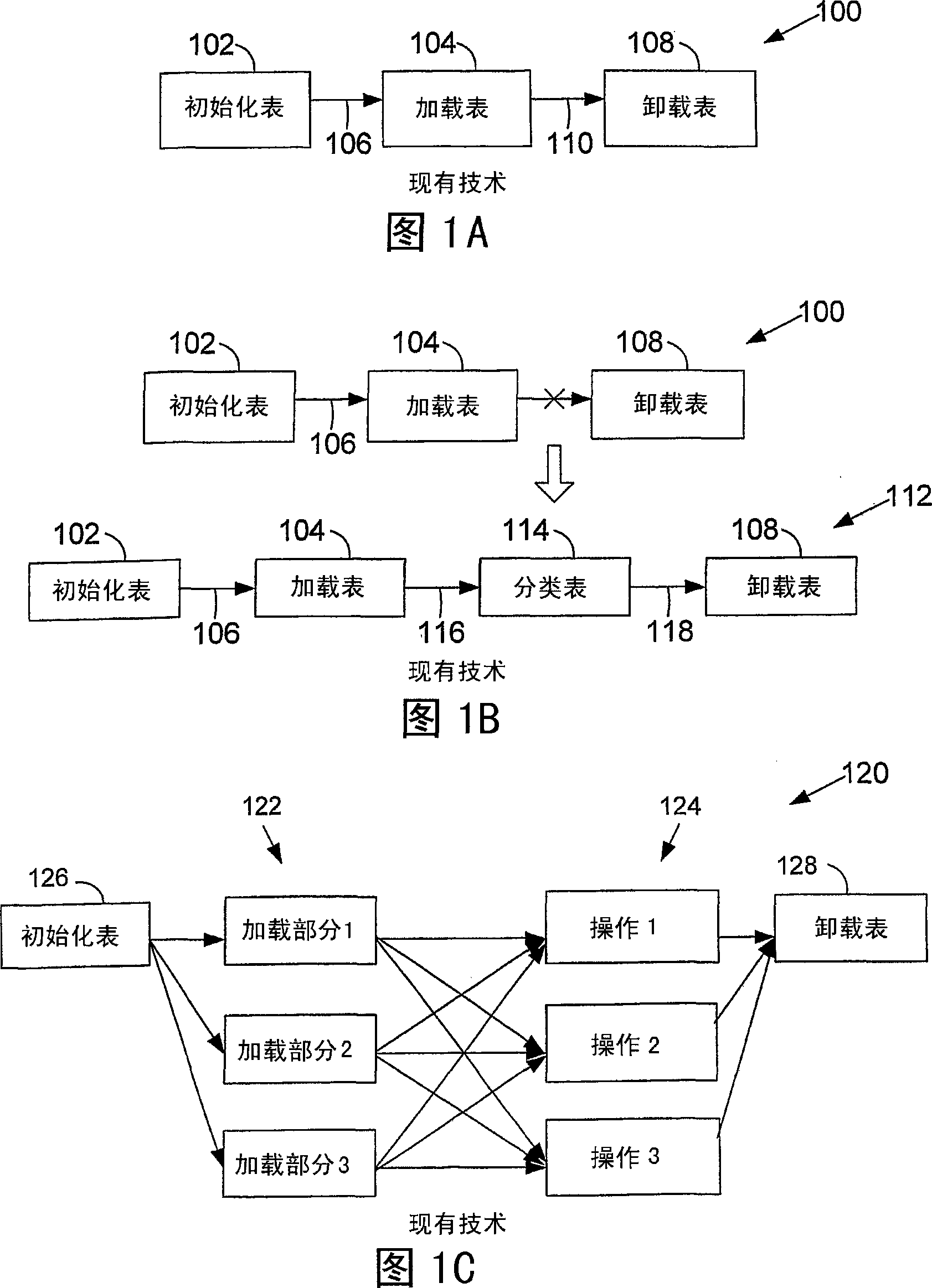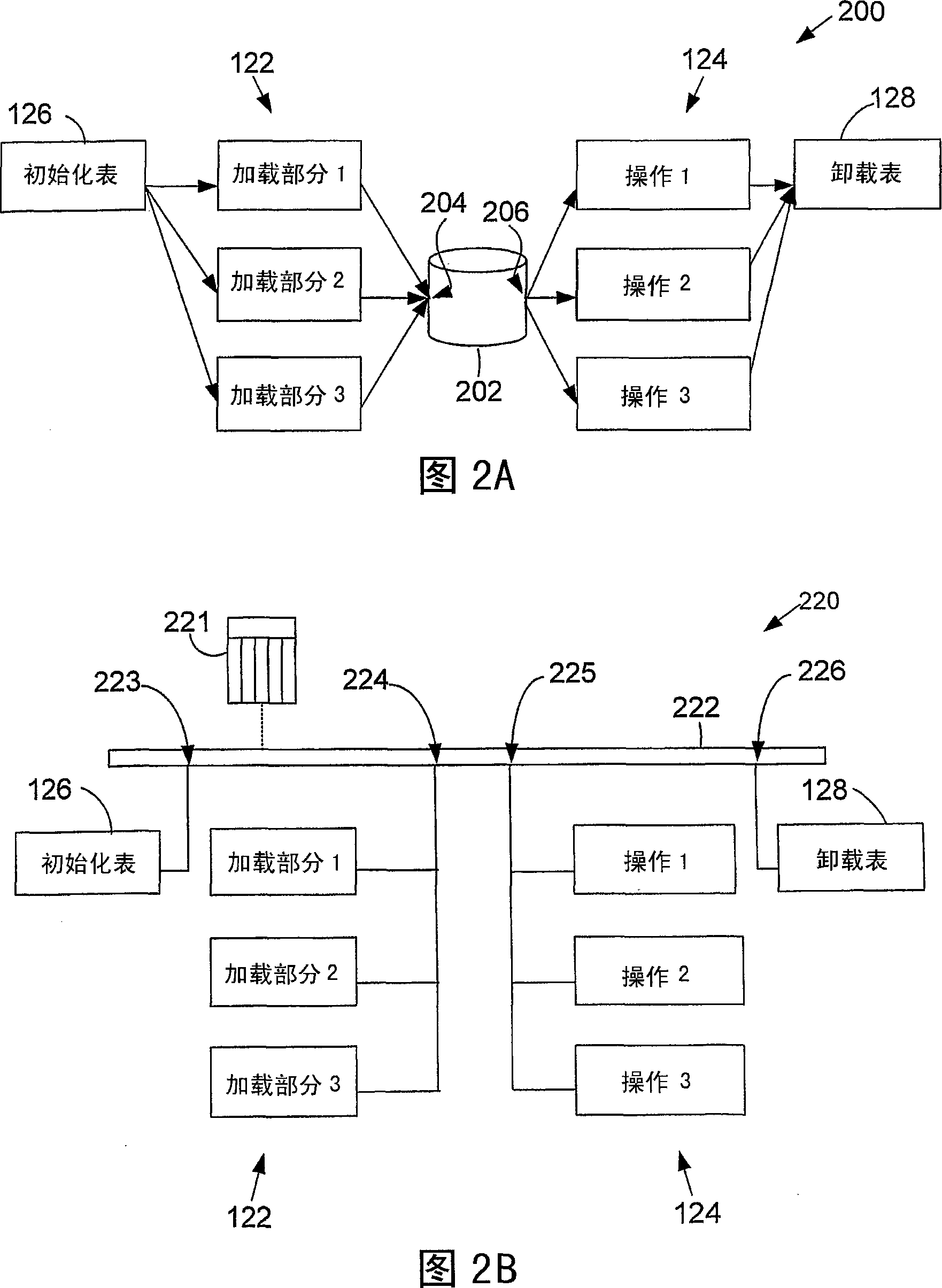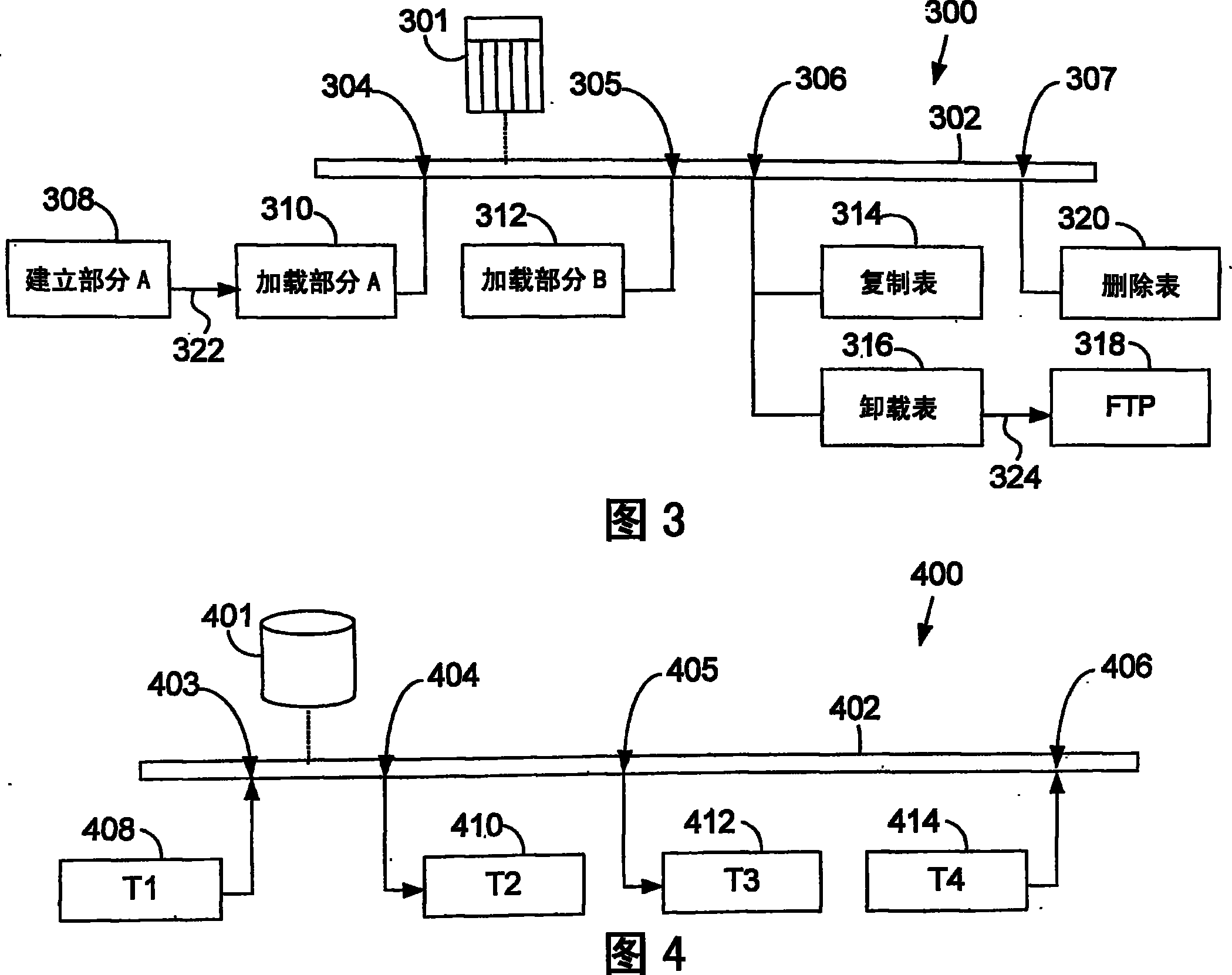Controlling task execution
A technology for controlling tasks and tasks, applied in the direction of program control design, multi-programming devices, instruments, etc., to achieve the effect of reducing a large number of links
- Summary
- Abstract
- Description
- Claims
- Application Information
AI Technical Summary
Problems solved by technology
Method used
Image
Examples
Embodiment Construction
[0025] One method for satisfying dependency constraints between executing or initializing tasks in a runtime environment is by performing a control process that accepts a graphical representation of dependencies as a specification of those dependencies. The control process initiates the execution of tasks (in the same or different execution environments) based on the graphical representation of task dependencies. For example, the user can use the graphical user interface to associate the nodes and links of the graph with tasks and dependencies, respectively, thereby creating a dependency graph. Alternatively, a dependency graph may be automatically generated based on explicit or implied ordering constraints. Once the dependency graph is generated, the user can view the dependency graph through a graphical user interface.
[0026] A first way to express constraints in the dependency graph associated with groups of tasks (which interact with resources) is to include resource un...
PUM
 Login to View More
Login to View More Abstract
Description
Claims
Application Information
 Login to View More
Login to View More - R&D
- Intellectual Property
- Life Sciences
- Materials
- Tech Scout
- Unparalleled Data Quality
- Higher Quality Content
- 60% Fewer Hallucinations
Browse by: Latest US Patents, China's latest patents, Technical Efficacy Thesaurus, Application Domain, Technology Topic, Popular Technical Reports.
© 2025 PatSnap. All rights reserved.Legal|Privacy policy|Modern Slavery Act Transparency Statement|Sitemap|About US| Contact US: help@patsnap.com



